Need assistance?
Experiencing any discomfort in your eyes or problems with your vision?
Don't hesitate to contact us
Treatments and Services
We do comprehensive eye tests where we look for any pathology in the eye such as:
We prescribe corrective glasses and contant lenses for refractive errors like:
Age-Related Macular Degeneration

Symptoms may include:
- Visual distortions, such as straight lines seeming bent
- Reduced central vision in one or both eyes
- The need for brighter light when reading
- Decreased intensity or brightness of colors
- A general haziness in your overall vision
- Difficulty recognizing faces

Dry Macular Degeneration
Dry macular degeneration is a common eye disorder among people over 50. It causes blurred or reduced central vision, due to thinning of the macula. The macula is the part of the retina responsible for clear vision in your direct line of sight. Dry macular degeneration may first develop in one eye and then affect both. Over time your vision may worsen and affect your ability to do things such as read, drive and recognize faces. Early detection and self-care measures may delay vision loss due to dry macular degeneration.
Dry macular degeneration symptoms usually develop gradually and without pain. They may include:
- Visual distortions, such as straight lines seeming bent
- Reduced central vision in one or both eyes
- The need for brighter light when reading or doing close work
- Increased difficulty adapting to low light levels, such as when entering a dimly lit restaurant
- Increased blurriness of printed words
- Decreased intensity or brightness of colors
- Difficulty recognizing faces
Wet Macular Degeneration
Wet macular degeneration is a chronic eye disorder that causes blurred vision or a blind spot in your visual field. It's generally caused by abnormal blood vessels that leak fluid or blood into the macula. The macula is in the part of the retina responsible for central vision. Early detection and treatment of wet macular degeneration may help reduce vision loss and, in some instances, recover vision.
Wet macular degeneration symptoms usually appear suddenly and worsen rapidly. They may include:
- Visual distortions, such as straight lines seeming bent
- Reduced central vision in one or both eyes
- Decreased intensity or brightness of colors
- A well-defined blurry spot or blind spot in your field of vision
- A general haziness in your overall vision
- Abrupt onset and rapid worsening of symptoms
Glaucoma

Symptoms may include:
- Open-angle glaucoma
- Patchy blind spots in your side (peripheral) or central vision, frequently in both eyes
- Tunnel vision in the advanced stages
- Severe headache
- Eye pain
- Nausea and vomiting
- Blurred vision
- Halos around lights
- Eye redness
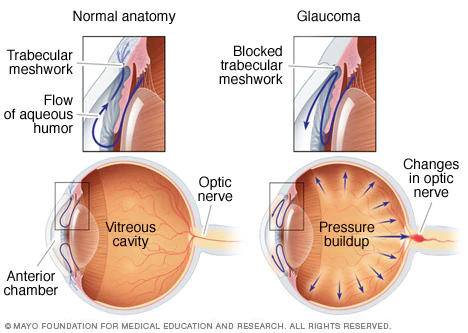
Glaucoma is a group of eye conditions that damage the optic nerve, the health of which is vital for good vision. This damage is often caused by an abnormally high pressure in your eye.
Glaucoma is one of the leading causes of blindness for people over the age of 60. It can occur at any age but is more common in older adults.
If left untreated, glaucoma will eventually cause blindness. Even with treatment, about 15 percent of people with glaucoma become blind in at least one eye within 20 years.
The signs and symptoms of glaucoma vary depending on the type and stage of your condition.
Promptly book an appoinment with us if you experience some of the symptoms of acute angle-closure glaucoma, such as severe headache, eye pain and blurred vision.
Cataracts
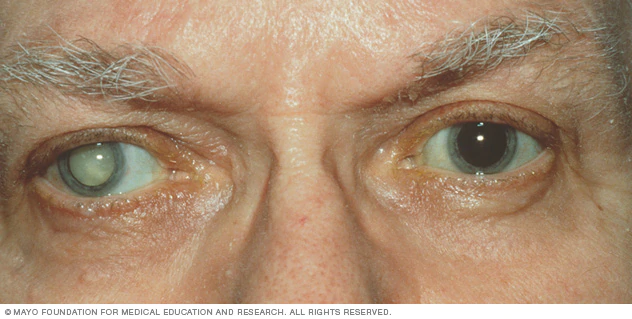
Symptoms may include:
- Clouded, blurred or dim vision
- Increasing difficulty with vision at night
- Sensitivity to light and glare
- Need for brighter light for reading and other activities
- Seeing "halos" around lights
- Frequent changes in eyeglass or contact lens prescription
- Fading or yellowing of colors
- Double vision in a single eye

A cataract is a clouding of the normally clear lens of your eye. For people who have cataracts, seeing through cloudy lenses is a bit like looking through a frosty or fogged-up window. Clouded vision caused by cataracts can make it more difficult to read, drive a car (especially at night) or see the expression on a friend's face. Most cataracts develop slowly and don't disturb your eyesight early on. But with time, cataracts will eventually interfere with your vision.
At first, the cloudiness in your vision caused by a cataract may affect only a small part of the eye's lens and you may be unaware of any vision loss. As the cataract grows larger, it clouds more of your lens and distorts the light passing through the lens. This may lead to more noticeable symptoms.
Diabetic Retinopathy

Symptoms may include:
- Spots or dark strings floating in your vision (floaters)
- Blurred vision
- Fluctuating vision
- Impaired color vision
- Dark or empty areas in your vision
- Vision loss
- Diabetic retinopathy usually affects both eyes.
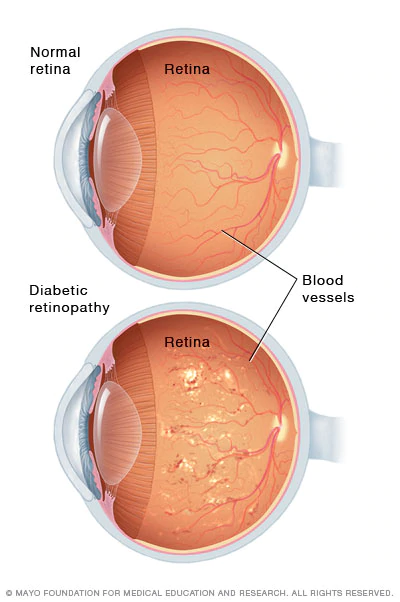
Diabetic retinopathy is a diabetes complication that affects eyes. It's caused by damage to the blood vessels of the light-sensitive tissue at the back of the eye (retina). At first, diabetic retinopathy may cause no symptoms or only mild vision problems. Eventually, it can cause blindness. The condition can develop in anyone who has type 1 or type 2 diabetes. The longer you have diabetes and the less controlled your blood sugar is, the more likely you are to develop this eye complication.
You might not have symptoms in the early stages of diabetic retinopathy. As the condition progresses, diabetic retinopathy symptoms may become evident.
Myopia (Nearsightedness)

Symptoms may include:
- Blurry vision when looking at distant objects
- The need to squint or partially close the eyelids to see clearly
- Headaches caused by eyestrain
- Difficulty seeing while driving a vehicle, especially at night (night myopia)
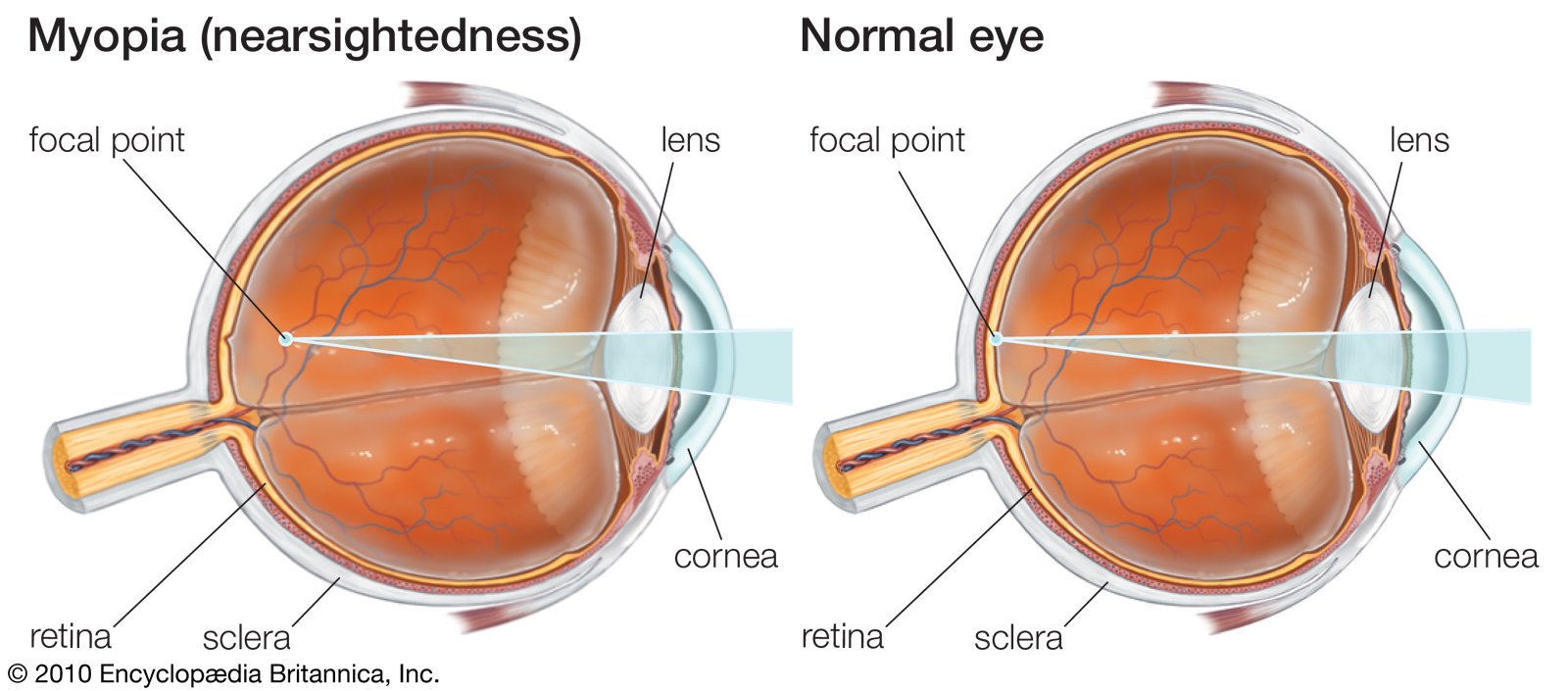
Nearsightedness (myopia) is a common vision condition in which you can see objects
near to you clearly, but objects farther away are blurry. It occurs when the shape
of your eye causes light rays to bend (refract) incorrectly, focusing images in front
of your retina instead of on your retina.
A basic eye exam can confirm nearsightedness. You can compensate for the blur with eyeglasses, contact lenses or refractive surgery.
Hyperopia (Farsightedness)

Symptoms may include:
- Nearby objects may appear blurry
- You need to squint to see clearly
- You have eyestrain, including burning eyes, and aching in or around the eyes
- You have general eye discomfort or a headache after doing close tasks, such as reading, writing, computer work or drawing, for a time
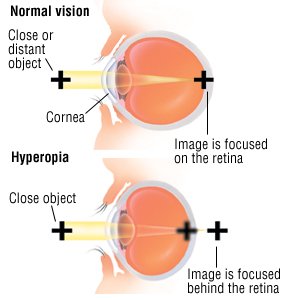
Farsightedness (hyperopia) is a common vision condition in which you can see distant objects clearly, but objects nearby may be blurry. The degree of your farsightedness influences your focusing ability. People with severe farsightedness may be able to clearly see only objects a great distance away, while those with mild farsightedness may be able to clearly see objects that are closer. Farsightedness usually is present at birth and tends to run in families. You can easily correct this condition with eyeglasses or contact lenses. Another treatment option is surgery.
Astigmatism
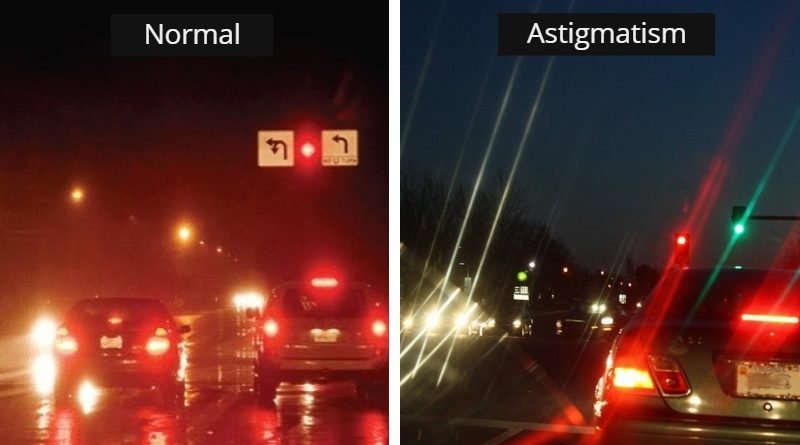
Symptoms may include:
- Blurred or distorted vision
- Eyestrain or discomfort
- Headaches
- Difficulty with night vision
- Squinting

Astigmatism is a common and generally treatable imperfection in the curvature of your eye that causes blurred distance and near vision.
Astigmatism occurs when either the front surface of your eye (cornea) or the lens, inside your eye, has mismatched curves. Instead of having one curve like a round ball, the surface is egg shaped. This causes blurred vision at all distances.
Make an appoinment with us if your eye symptoms detract from your enjoyment of activities or interfere with your ability to perform everyday tasks.
Presbyopia
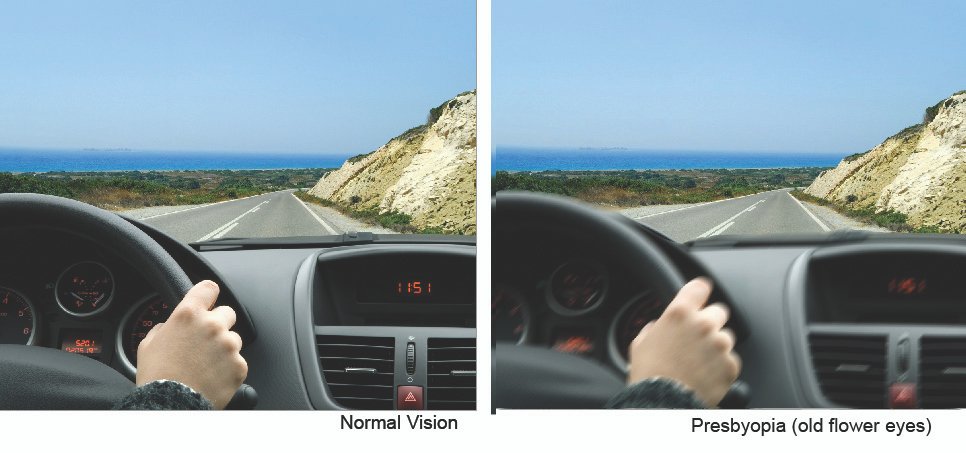
Seek immediate medical care if you:
- Have a sudden loss of vision in one eye with or without eye pain
- Experience sudden hazy or blurred vision
- See flashes of light, black spots or halos around lights
- Have double vision

Presbyopia is the gradual loss of your eyes' ability to focus on nearby objects. It's a natural, often annoying part of aging. Presbyopia usually becomes noticeable in your early to mid-40s and continues to worsen until around age 65. You may become aware of presbyopia when you start holding books and newspapers at arm's length to be able to read them. A basic eye exam can confirm presbyopia. You can correct the condition with eyeglasses or contact lenses. You might also consider surgery.
Presbyopia develops gradually. You may first notice these signs and symptoms after age 40:
- A tendency to hold reading material farther away to make the letters clearer
- Blurred vision at normal reading distance
- Eyestrain or headaches after reading or doing close-up work